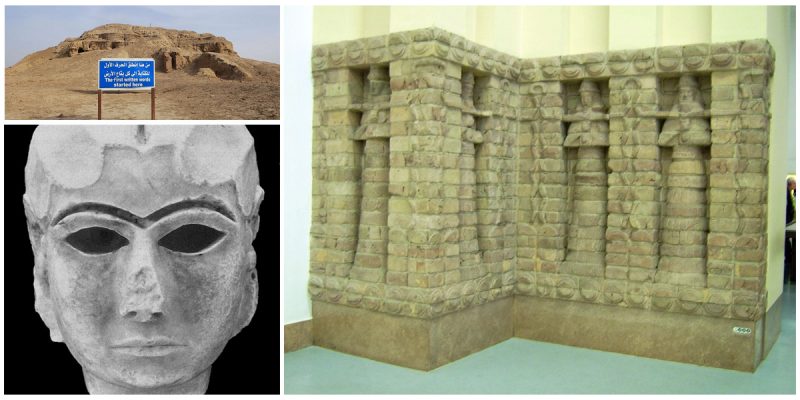One of the most important cities in ancient Mesopotamia, considered to be the first major city in the world, was Uruk. It was located between the Tigris and the Euphrates rivers, close to modern Samawah, Al-Muthanna, in Iraq.
Uruk played a leading role in the urbanization of the Sumer civilization in the 4th millennium BC. The legendary King Gilgamesh built the walls of the city, which covered an area of 2.32 square miles and had a population of almost 80,000. According to the chronology of the list of Sumerian kings, Gilgamesh ruled the city in the 27th century BC.
Starting in 2000 BC, when there were struggles between Babylonia and Elam, the city slowly lost importance. But it was not abandoned, and it was inhabited throughout the later Seleucid and Parthian periods. The last inhabitants left the city after the Muslim conquest of Persia. It lay buried until the archaeologist William Loftus led excavations on the site in the years 1850 to 1854 for the British Museum.
He identified the city as the Aramaic Erech, the second city of Nimrod, from which it is believed the name of the modern state of Iraq is derived. In 1912, the archaeological team of Julius Jordan discovered another structure thought to have been built by King Gilgamesh, the Temple of Ishtar.
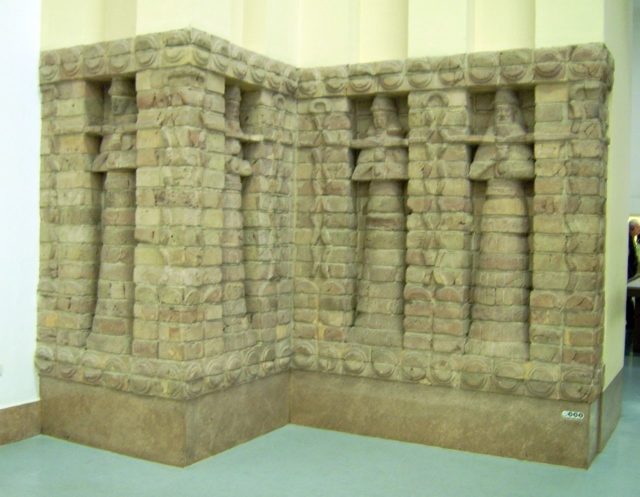
This temple was one of four in Uruk, and the structure of each was quite remarkable. They were constructed from brick and decorated with the most beautiful mosaics. During the Uruk Period (ca. 4000 to 3100 BC), the city was the center of urbanization and state formation. The expansion developed from agricultural villages to an urban center with a stratified society, a bureaucracy, and a strong military.
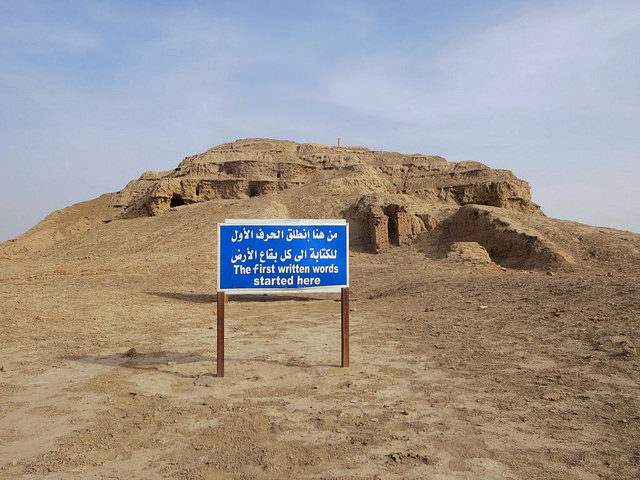
In its time, Uruk was located in Mesopotamia’s southern region on the present bed of the Euphrates river. The people traded in grains and other foodstuffs, and they also specialized in numerous crafts, but perhaps the most important innovation was the development of writing, which started in the city.
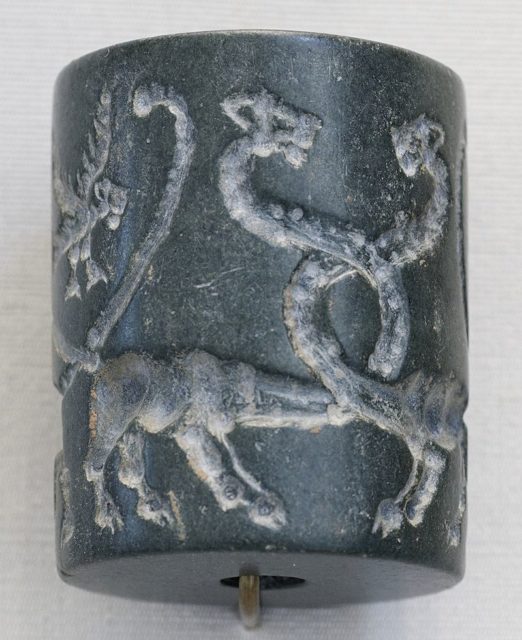
One of the most interesting objects discovered was a cylinder seal, which was used as a personal signature. Many historians compare this item with modern forms of personal identification. The seal was probably used for administrative purposes. Also, one of the earliest known tablets of writing was found during excavations of the site.
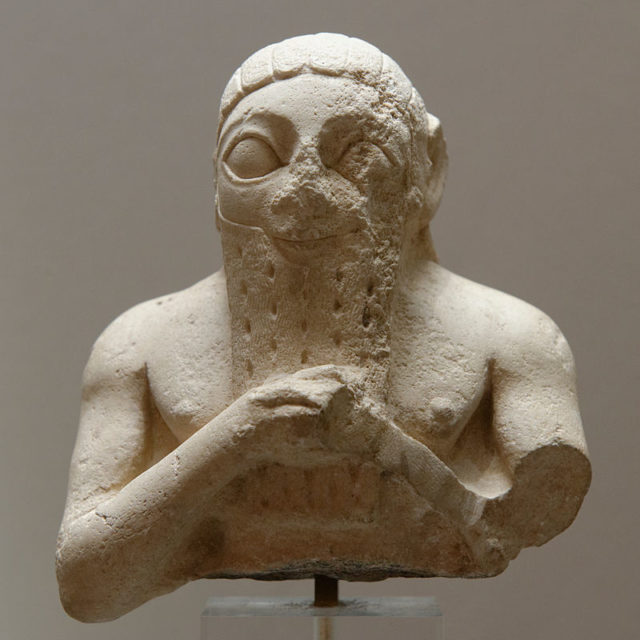
The excavations of the city were complicated by the fact that throughout the centuries many other buildings were constructed on top of the ancient ones, forming structural layers from several different periods, such as the Ubaid Period. Besides being the birthplace of writing, Uruk was also the place where the first architectural works to be built in stone were constructed, including the massive structure of the Anu ziggurat.
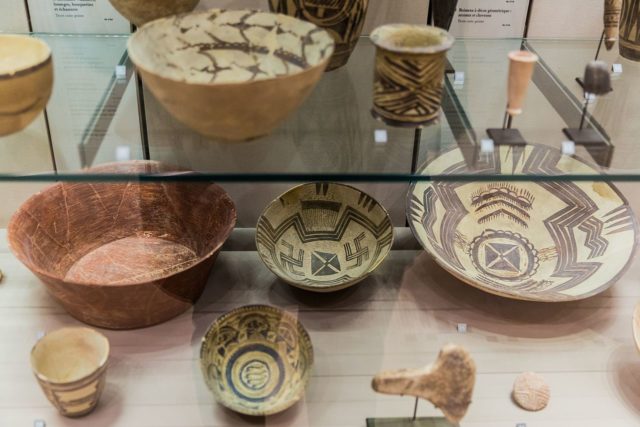
Uruk was divided into two sections known as the Eanna District and the Anu District. The sections were dedicated to the god Anu and his granddaughter, the goddess Inanna. The Eanna District was separated by walls from the rest of the city, and even today the reason for this separation is not certain. Some scholars believe that the district was used for ceremonial purposes and others think that, because the Anu District was the older part, it is connected with a legend in which the God Anu gives Inanna a private dwelling until her time to rise comes, hence why walls surrounded it.
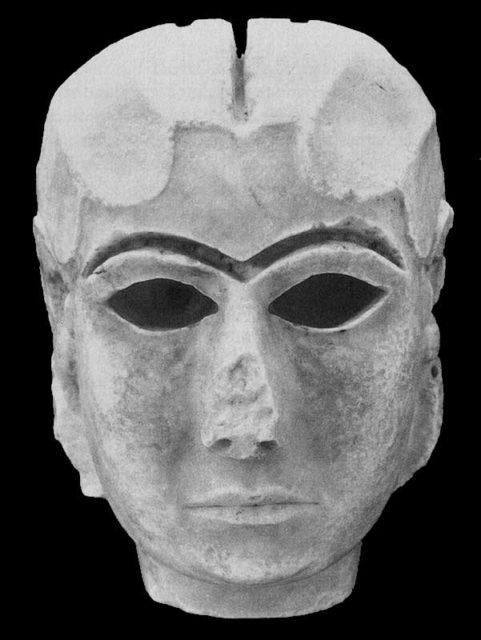
The Eanna District is one of the earliest examples of monumental public architecture, which arguably makes it the first true city in human history. Unlike the Eanna District, the Anu District includes only one large terrace known as the Anu Ziggurat. Later, in the Uruk III period, a massive White Temple was built atop the structure, and in the Uruk IV period the Stone Temple was erected.
Related story from us: Tula, the capital city of the Toltec Empire
A most significant artifact was found here, known as the Mask of Warka or the Lady of Uruk, and is considered to be one of the first representations of the human face. The marble sculpture dates from 3100 BC and is probably a depiction of the goddess Inanna.
